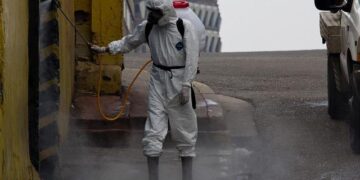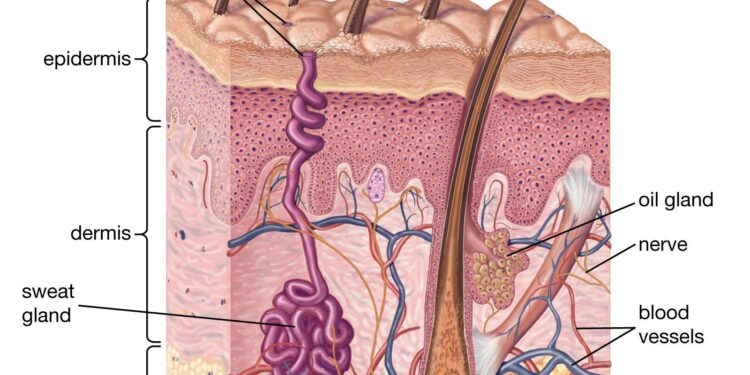As temperatures climb across Southern Colorado, residents are coping with the region’s intense summer heat in various ways. But what exactly happens when our bodies start to sweat, and how does this natural process help us stay cool under the blazing sun? FOX21 News Colorado takes an in-depth look at the science of sweating-exploring how perspiration regulates body temperature, the factors that influence sweat production, and practical tips for managing heat during the hottest months. From the foothills to the high plains, understanding the mechanics behind sweating can help Coloradans beat the heat safely and effectively.
The Biology Behind Sweating and Its Role in Thermoregulation
When Southern Colorado’s sun beats down, our bodies spring into a silent, efficient action to prevent overheating: sweating. Sweat glands, primarily the eccrine glands, are distributed across the skin and act as natural air conditioners. As body temperature rises, these glands secrete a watery fluid composed mostly of water and electrolytes onto the skin’s surface. The critical process here is evaporation-when sweat evaporates, it draws heat away from the body, cooling you down. Unlike other cooling mechanisms, sweating is uniquely effective in dry climates like Southern Colorado, where low humidity accelerates evaporation, providing rapid relief from soaring temperatures.
- Eccrine glands: Found all over the body, especially on palms, soles, and forehead.
- Apocrine glands: Located in areas like the armpits, mainly activated by emotional stress.
However, sweating isn’t just about tossing out water; it’s a balanced system. As the body loses fluids, it also expels vital minerals such as sodium, potassium, and chloride. These electrolytes are essential for muscle function and nerve impulses, which means staying hydrated and replenished is crucial during intense heat. The body’s thermoregulatory center, located in the hypothalamus, continuously monitors and adjusts sweat production, orchestrating an intricate balance between cooling and conserving necessary resources. This biological fine-tuning ensures that while Southern Colorado residents brave the dry heat, their bodies remain protected against heat-related stress.
| Component | Role | Location |
|---|---|---|
| Eccrine Gland | Primary sweat secretion | Whole body |
| Apocrine Gland | Stress-induced sweat | Armpits, groin |
| Hypothalamus | Thermal regulation | Brain |
How Southern Colorado’s Climate Affects Perspiration Patterns
Southern Colorado’s unique blend of altitude and arid climate plays a significant role in how our bodies regulate temperature through sweat. The region’s thinner air at elevations above 6,000 feet means less oxygen, which can alter how the body responds to heat and physical exertion. While lower humidity levels generally allow sweat to evaporate quickly-helping cool the skin-this rapid evaporation can also lead to increased fluid loss, meaning residents and visitors alike may find themselves perspiring less visibly but dehydrating more quickly.
Several factors influenced by this climate combine to shape perspiration patterns here, including:
- Altitude: Reduced atmospheric pressure affects oxygen intake and sweat production.
- Low humidity: Speeds evaporation, causing sweat to disappear rapidly.
- Temperature swings: High daytime heat complemented by cool nights modifies sweating duration.
| Climate Element | Effect on Perspiration |
|---|---|
| Elevation (6,000+ ft) | Alters sweat gland efficiency |
| Humidity (10-30%) | Faster evaporation, potential dehydration |
| Temperature Range (Day/Night) | Variable sweating cycles |
Expert Tips for Staying Hydrated and Managing Heat During Summer
When temperatures soar in Southern Colorado, keeping the body properly hydrated is essential for maintaining optimal health and performance. Experts recommend prioritizing water intake throughout the day, aiming for at least 8 to 10 glasses, and increasing consumption during outdoor activities or strenuous exercise. Remember, thirst is not always the best indicator of hydration status – proactively sipping fluids can help prevent heat-related illnesses before they begin. Incorporating foods with high water content such as watermelon, cucumbers, and oranges can also contribute to staying cool from the inside out.
Managing heat means more than just drinking fluids. Wearing lightweight, breathable clothing can dramatically improve comfort by allowing sweat to evaporate efficiently, the body’s natural cooling process. Alongside physical precautions, scheduling outdoor activities during the cooler hours of the morning or evening reduces exposure to peak heat. Keep these expert strategies top of mind to safeguard yourself against dehydration and heat stress as summer intensifies in the high desert climate.
- Consistent hydration: Drink fluids regularly, don’t wait until thirsty.
- Eat hydrating foods: Include fresh fruits and veggies in meals.
- Dress smart: Opt for light-colored, loose, moisture-wicking fabrics.
- Time activities wisely: Avoid midday heat whenever possible.
| Recommended Fluid Intake | Hours Active |
|---|---|
| 8-10 cups | Low Activity |
| 12-16 cups | Moderate Activity |
| 16+ cups | High Activity/Heat Exposure |
Insights and Conclusions
As Southern Colorado continues to experience rising temperatures, understanding the science of sweating becomes increasingly important for residents seeking effective ways to stay cool and safe. From the body’s natural cooling mechanisms to practical tips for hydration and heat management, staying informed can make all the difference during the hottest days. FOX21 News Colorado will keep you updated with the latest health advisories and weather forecasts to help you beat the heat this summer.






























